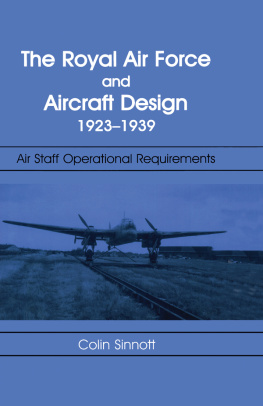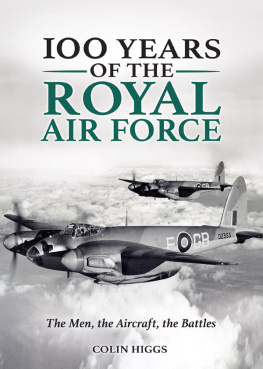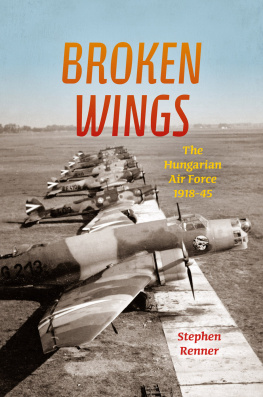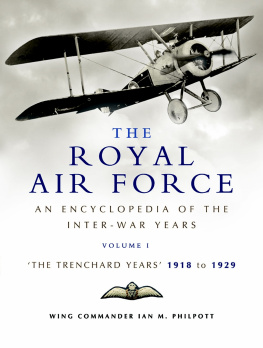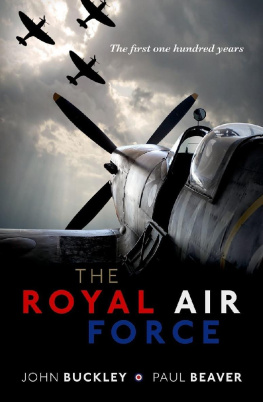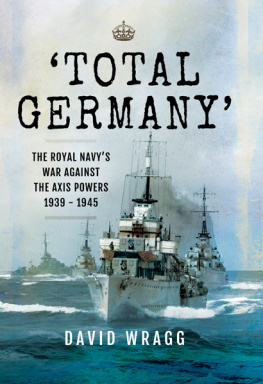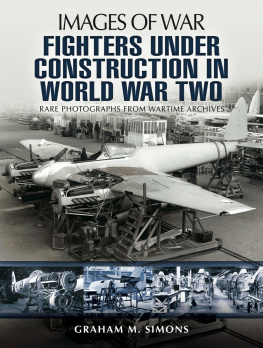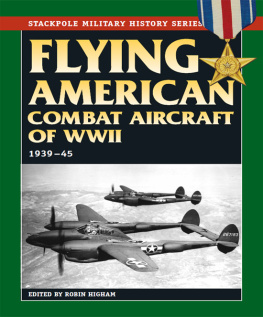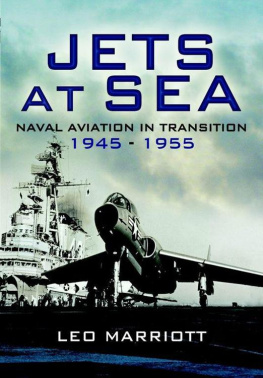THE ROYAL AIR FORCE
1930 TO 1939

At the Jubilee Review of 1935, King George V was shown an air force of biplanes. By the time that war broke out in 1939 the RAF had been transformed. Fixed undercarriages, fixed-pitch propellers, twin Vickers guns in fighters bombs slung beneath the wings, open cockpits and fabric-covered fuselages were on their way out Eight Browning guns buried in the wings of monoplane fighters, bombers with bomb-bays in the fuselage, retractable undercarriages, variable-pitch propellers and power-operated gun turrets were on the way in.
THE ROYAL AIR FORCE
1930 TO 1939
AN ENCYCLOPEDIA OF THE
INTER-WAR YEARS
VOLUME II
REARMAMENT 1930 TO 1939
I.M. Philpott
First published in Great Britain in 2008 by
Pen & Sword Aviation
an imprint of
Pen & Sword Books Ltd
47 Church Street
Barnsley
South Yorkshire
S70 2AS
Copyright Ian M. Philpott, 2008
ISBN 978-1-84415-391-6
The right of Ian M. Philpott to be identified as Author of this Work has been asserted by him in accordance with the Copyright, Designs and Patents Act 1988.
A CIP catalogue record for this book is available from the British Library
All rights reserved. No part of this book may be reproduced or transmitted in any form or by any means, electronic or mechanical including photocopying, recording or by any information storage and retrieval system, without permission from the Publisher in writing.
Volume I of this work The Trenchard Years 1918 to 1929 was published in 2005 and is available from Pen and Sword Books, ISBN 1 84415 154 9.
Typeset in 9/11 pt Palatino by
Mac Style, Nafferton, E. Yorkshire
Printed and bound in the UK by
CPI
Pen & Sword Books Ltd incorporates the Imprints of Pen & Sword Aviation, Pen & Sword Maritime, Pen & Sword Military, Wharncliffe Local History, Pen and Sword Select, Pen and Sword Military Classics and Leo Cooper.
For a complete list of Pen & Sword titles please contact
PEN & SWORD BOOKS LIMITED
47 Church Street, Barnsley, South Yorkshire, S70 2AS, England
E-mail: enquiries@pen-and-sword.co.uk
Website: www.pen-and-sword.co.uk
Contents
This second volume of my inter-war history follows the same format as Volume I. What is different is the emphasis because this volume is about rearmament. Examples of the different treatment can be found in the chapter on Air Control operations in the 1930s. These operations differed little from those carried out in the 1920s, so the arrangement of in this volume concentrates on the changes in the policy of the employment of airpower at sea with the approach of war.
Apart from the chapter on Air Control operations overseas, the book is not about war but about the preparations for war. I am reminded of my old music master at school who introduced us to the Planets Suite by Gustav Holst. It was Mars that always impressed me. Mars was the bringer of war. It is the growing menace that Holst so brilliantly puts to music. Or it is like those passages from Shakespeares Henry V before the battle of Agincourt: the hammer of the smithies preparing the arms and armour for battle. This is the essence of the 1930s after the failure of disarmament and the coming to power of Adolf Hitler in Germany.
Recently I was discussing the presentation of my work with an established author of RAF history. He was worried that putting photographs or images of aircraft so often in among the narrative might patronize the reader. While I respect his work I chose to differ. Placing diagrams and photographs among a closely argued narrative in no way detracts from the quality of an argument or discussion. Recently I read a history of the Russian armys advance on Berlin in 1945. It was a very detailed account of battles and the disposition of German and Russian units at different stages of the campaign. But I never knew who was where at different stages of the battle. For me the enjoyment of a book on military campaigns is derived from having maps and other illustrations in among the narrative so that I know exactly who is where, even at the end of every day in a short campaign. For those like me there are plenty of illustrations built into the subject paragraphs. For any reader who might feel patronized, he or she has only to ignore the visual material.
As with Volume I, so with this volume: nearly all paragraphs have headings in heavy type. This is for ease of reference. There are no footnotes, since this is meant to be a comprehensive account of the period. A specific source may often be quoted alongside a heading. There is a reference to books that have been consulted in compiling this history so that those who may wish to undertake further study may know where to turn. Most of the information gathered which is included here has been found at the National Archives at Kew and the reading room of the RAF Museum, Hendon. The squadron histories can be found on microfilm, and details of the week-to-week activities of the RAF during the inter-war period from Air Ministry weekly orders. There are literally hundreds of weekly orders that provide a detailed picture of the RAF. I had to choose those that would provide a mixture of activities. I chose some orders for their unusual content, like the forerunner of the modern wet suit, which appears in Volume I, and the flying-boat that took off in a circular clockwise pattern. Others provide a comparison between aircraft movements in and out of a modern RAF airfield on paved runways with air traffic control and movements in the 1930s, when a pilot had to keep a good lookout for other aircraft approaching the grass airfield, take account of the wind direction in making an approach and report his arrival at the watch office after touch-down.
It is hoped that this work fills a gap in the market in studies of the development of airpower in those critical interwar years.
Wing Commander I.M. Philpott MSocSc, BSc (Econ), MCMI, RAF (Retd)
To Mr Peter Elliott and to his research staff of the RAF Museum, Hendon, for their untiring efforts in producing photographs and source material for the compilation of the encyclopedia.
To Group Captain D.E. Larkin RAF (Retd) at RAF Halton, who provided expert knowledge of the Boy Apprentice scheme in the 1930s.
To Wing Commander C.G. Jefford RAF (Retd) whose book RAF Squadrons has been a constant companion and source for tracing the movement of RAF squadrons in the 1930s.
To the staff of the National Archives, Kew, who have been most helpful during my many visits there over the past five years, and for the provision of photographic material.
To the author John W.R. Taylor and the publishers Ian Allen for a Pictorial History of the RAF 1918 to 1939 Vol. 1. This publication provided a wealth of useful photographs of the period.
To the publishers of the Aeroplane for the use of photographic material.
To the Putnam Press and HMSO for the most useful accounts of the development of the aircraft industry during the 1930s as seen through the eyes of Harald Penrose, the chief test pilot of Westland Aircraft during the 1930s.
To the publishers and authors of the Action Stations series of books, which give details of squadron movements at airfields in the United Kingdom and overseas and other pertinent information about the development of these airfields. Information was extracted from these publications as they applied to the period 1 January 1930 to 3 September 1939, saving months of research.


